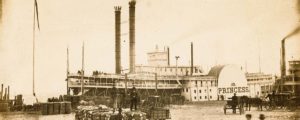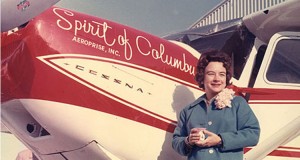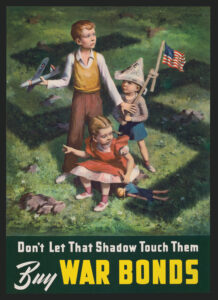Reviewed by Siân Ellis
By A.A. Milne
Available in many editions, both soft and hardcover
Strange to say, I never read A.A. Milne’s Winnie-the-Pooh as a child. Alice’s Adventures in Wonderland, The Wind in the Willows, yes. But not Pooh. Yet if you mentioned it, I’d have immediately understood who and what you were talking about. I “knew” that greedy “Bear of Very Little Brain” with an overriding penchant for honey, and already pictured him bumbling into and out of adventures with help from his animal friends and Christopher Robin, the son of the storyteller/author. In fact, if you asked me and I had answered before carefully considering (just like the whimsical four-pawed one), I might even have claimed to have read Winnie-the-Pooh — the book seemed so familiar.
What, then, explains the penetration of this story into the shared consciousness of our — real and imagined — childhoods? Why is there a thriving Pooh Country industry centered on Hartfield and the Ashdown Forest in East Sussex, drawing pilgrims (yes, pilgrims) from around the world? For the Brits it can’t simply be that we’re soft about animals (we do love our pets) and so relate without complication to Pooh’s world of anthropomorphized creatures.
Alan Alexander Milne, born 1882, was the son of a Scottish schoolmaster. He read mathematics at Cambridge, but his real inclination was toward writing. Aged 24, he was appointed assistant editor of Punch and, after serving as a signals officer in World War I, he achieved early success as a playwright.
In 1924 Milne and his wife Daphne moved from London to 16th-century Cotchford Farm outside Hartfield on the edge of the Ashdown Forest. That November saw publication of the author’s first book of children’s poems, When We Were Very Young. The verses included one that had already appeared in Punch, relating how “A bear, however hard he tries/Grows tubby without exercise.” He wasn’t yet called Winnie-the-Pooh, but he was on his way — and in Ashdown Forest Milne had found the setting for his bear stories.
Winnie-the-Pooh (1926), Now We Are Six (1927) and The House at Pooh Corner (1928) followed. By the time the latter appeared, sales of its predecessors had broken all records.
When I belatedly read Winnie-the-Pooh, I wasn’t disappointed; the qualities that have endeared it to several generations are many. The protagonists, based on Christopher Robin’s toys, are simply drawn: Pooh is greedy, Eeyore the donkey is gloomily misanthropic, Piglet is timid and so on. But they are also individuals who occasionally transcend their natures — it was Pooh’s brain wave that effected the rescue of Piglet from the flood, after all. Not bad for a Bear of Very Little Brain. Maybe Pooh’s way of “muddling through” even owes something to the perceived British national character!
There’s also an underlying humor to some of the animals’ conversations, perhaps more meaningful to adults than children. Self-important Owl resorts to officialese when confronted with the problem of finding Eeyore’s lost tail (think of bureaucrats you have known, reaching for their handbooks of jargon): “The customary procedure in such cases is as follows.…” After Pooh queries this “Crustimoney Proseedcake,” Owl admits he just means “the Thing to Do.” Those capitals: still so tellingly self-important.
Or maybe Milne’s recurrent use of capitals simply reflects the exaggerated Importance of minor Incidents in a Child’s World, the inflation of the mundane into an Adventure, the investment of Meaning in otherwise casual Happenings. The beauty of Pooh is that the various escapades are usually rooted in the ordinary: birthday presents and parties, feeling hungry and looking for food. Adventures spring from this safely circumscribed world — the weather turns unexpectedly bad, mysterious footprints appear. But even when danger threatens, you don’t get the darkness of Alice or Willows. The mystery is solved and everyone (or at least Pooh) goes home for luncheon — honey, of course. The return to normality is just a few steps away, and the escapade has been contained in a morning or afternoon.
Ironically, Milne came to resent his success in children’s literature at the expense of his other, adult writing. But for generations of children and grown-ups, the stories of Pooh have attained iconic status that befits their inclusion in the top 10 list of most British books — and explains why I was so familiar with the characters before reading about them for real. These are simple, fun, innocent, reassuringly safe tales. And perhaps above all that’s why they endure. While we still inhabit the imaginative world of Pooh by virtue of our tender age and inexperience, we relate directly to the Adventures that cuddly toy animals Brought to Life can have. When we have left that world, we look back with fondness to an innocence lost — and maybe welcome the chance to cocoon our own children in it.
It’s no surprise that adults as much as children enjoy visiting the Pooh Corner shop in Hartfield (www.pooh-country.co.uk), picking up a map and going on an “Expotition” to the real “Enchanted Places” like Poohsticks Bridge featured in Pooh and Pooh Corner. “That Accounts for a Good Deal,” as Eeyore said during the saga of his missing tail. “It Explains Everything.”




